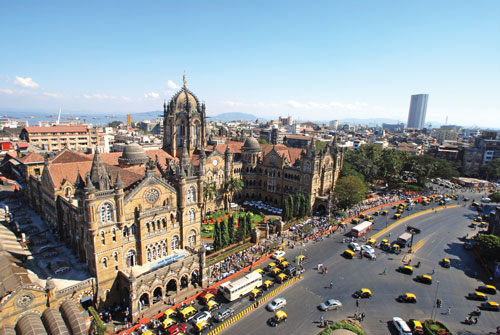To effectively grow Maharashtra as a leisure tourist destination and spur business travellers to stay longer, more efforts should be made to court new international markets.

One of India’s most visited states, Maharashtra has been attracting steady droves of business tourists thanks to the success of the capital city Mumbai as a financial and commerce hub.
But the inbound leisure market has languished in the shadows of Maharashtra’s successful business sector, with visitor footfalls largely confined to Mumbai and Aurangabad (home to World Heritage sites Ellora and Ajanta Caves) – something the trade wants to change.
“Mumbai is a busy city primarily for business travellers, (so) leisure travel is growing at a slow pace,” said Dipak Deva, managing director, Travel Corporation (India). “Travellers have a lot to explore within these two cities (Mumbai and Aurangabad) but Pune and Nasik are promising destinations too.”
International tourists have started to explore new destinations like Guhagar near Ratnagiri and Diveagar in Raigad district, for its serene beaches and coastal cuisine, as well as Chikhaldara, a hill station in the Vidarbha region, according to Paraag Jaiin Nainuttia, managing director of the Maharashtra Tourism Development Corporation. He added: “We are constantly promoting Maharashtra through various campaigns and have been successful in reaching out to the international markets. We emphasise on leisure tours, beach tours, rural tourism and heritage tourism, among others.”
However, marketing Maharashtra as a leisure travel destination is not enough; trade players also urge the NTO to seek out new international markets.
“Apart from the current source markets like Europe, the US and Far East, there is a need to promote Maharashtra as a leisure destination to markets like Russia, South-east Asia and China,” said Subhash Goyal, chairman, STIC Travel Group.
He added: “The state tourism department should aggressively market the state’s diverse tourism products such as wildlife sanctuaries like the Melghat Tiger Reserve, forts like Sindhudurg and beaches like Ganpatipule to international markets.”
In order to drive leisure tourists to explore lesser-known attractions in the state, NS Rathore, chairman (western region) of Indian Association of Tour Operators, stressed the need to improve connectivity, transport and the quality of international language-speaking guides.
On its part, the state government of Maharashtra in March this year rolled out a new tourism policy to attract investments in the sector, offering fiscal incentives to new projects including concessions on stamp duty, electricity duty, entertainment tax, leisure tax and refund of VAT.
Dubbing the new tourism policy “a progressive and positive step”, Deva is optimistic that this initiative will provide a stronger impetus for leisure tourist traffic into Maharashtra.
“Critical factors like e-visa may change the focus in time to come. Countries like South Africa, Turkey, Israel, Oman, the US, the UK and Argentina feature high on the list of source markets and hopefully with the ministry undertaking multiple steps to boost tourism in the state, things will change,” he added.
Meanwhile, hoteliers are starting to see some positive changes on the ground, with business tourists showing an inclination to spend more time in Mumbai.
Said JW Marriott Mumbai Sahar’s general manager, Saeid Heidari: “Although many international tourists visit the city for business, they stay back after completing their commitments to pursue leisure and recreational activities.”
This article was first published in TTG Asia, August 5, 2016 issue, on page 28. To read more, please view our <a href="http:please view our digital edition or click here to subscribe.




















